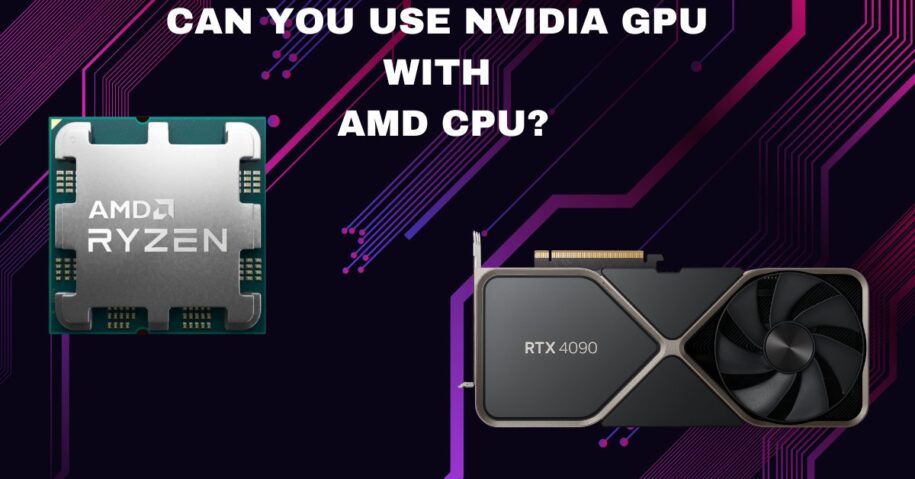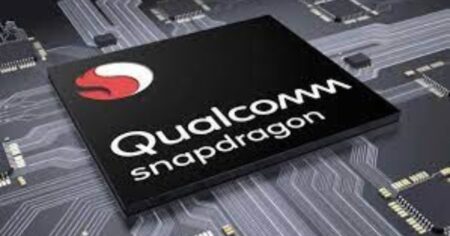
Building a gaming PC can be difficult, especially for beginners who may struggle to verify hardware compatibility. It’s a popular fallacy that you must pair CPUs and GPUs from the same manufacturer. Given the competition between AMD, Intel, and NVIDIA, it may appear logical that they would limit compatibility to promote their products, but this is not the case. You can match CPUs and GPUs from multiple manufacturers without compatibility difficulties. These components function together seamlessly as long as they comply with established interfaces and specifications, such as PCIe slots for GPUs. Other hardware components, such as motherboards, power supplies, and RAM, are more likely to have compatibility difficulties; therefore, it’s critical to research and purchase compatible parts for your build. AMD manufactures processors (CPUs) and graphics cards (GPUs), whereas NVIDIA is best known for its GPUs.
Given that AMD and NVIDIA compete in the GPU industry, it’s reasonable for people to wonder about AMD CPU compatibility with NVIDIA GPUs. You may use an NVIDIA GPU with an AMD CPU in a computer system. NVIDIA GPUs are compatible with motherboards, including PCIe (Peripheral Component Interconnect Express) slots. However, you must ensure that your power supply unit (PSU) can deliver enough power to the AMD CPU and the NVIDIA GPU, as these components have varied power requirements based on their models. Additionally, you should check for driver compatibility, as the GPU will require NVIDIA drivers to function correctly. In this article, we will briefly introduce Nvidia GPUs and AMD CPUs and their compatibility.
- Is it worthwhile to use an AMD CPU with an NVIDIA GPU?
- Performance-to-Cost Ratio:
- Gaming Preferences:
- Online Competitivity:
- Multitasking and Content Creation:
- Benefits of using NVIDIA GPU with an AMD CPU:
- Is it possible to use NVIDIA GeForce graphics cards with AMD CPUs?
- Is there any issue with using a Nvidia GPU with an AMD CPU?
- Frequently Asked Questions
Is it worthwhile to use an AMD CPU with an NVIDIA GPU?
The decision to use an AMD CPU with a Nvidia GPU or any other combination of components in a gaming PC is influenced by various factors, including your budget, gaming preferences, and performance needs. Here are some things to think about to help you make an informed decision:
Performance-to-Cost Ratio:
It is not true that AMD CPUs with Nvidia GPUs always provide the best performance-to-cost ratio. Component performance and cost might vary significantly based on the exact model and market availability at any given time. It’s critical to look into and compare benchmarks for the individual CPUs and GPUs you’re considering buying.
Gaming Preferences:
A gaming system’s performance is not entirely governed by the CPU and GPU. Other considerations include RAM, storage, and the monitor’s refresh rate. If you value high frame rates and playing games at high settings, investing in a powerful GPU (which Nvidia frequently supplies) is critical. A mid-range GPU, on the other hand, may suffice if you play fewer demanding games or at lower settings.
Online Competitivity:
If you’re a competitive gamer looking for any advantage, a high-end Nvidia GPU can provide capabilities such as ray tracing and DLSS (Deep Learning Super Sampling), improving aesthetics and performance in specific games. Nvidia is also well-known in esports, with many professional players using their GPUs.
Multitasking and Content Creation:
If you intend to do more than just gaming, such as content creation, video editing, or streaming, the CPU you choose becomes more important. Due to their numerous cores and threads, AMD CPUs excel at multitasking and content creation.
Finally, there is no one-size-fits-all solution, and your unique requirements and financial constraints determine the optimum CPU and GPU combination for your gaming demands. Before deciding, it’s usually a good idea to research and evaluate your gaming interests and priorities.
Benefits of using NVIDIA GPU with an AMD CPU:
Using AMD CPUs with AMD GPUs can provide various advantages, including access to particular features that improve system performance and potential cost savings. Here are a few benefits:
- Smart Access Memory (SAM): SAM is a technology that allows the AMD CPU to access more VRAM (Video Random Access Memory) from the GPU. This can assist in decreasing bottlenecks and increase overall system performance. SAM can provide significant performance increases in gaming and demanding applications. However, it’s important to note that SAM is only compatible with AMD’s more current components, so make sure your CPU and GPU support this function.
- Cost Savings: AMD CPUs have historically been more reasonably priced than NVIDIA counterparts, providing good value. While the GPU market can be unpredictable, with prices varying due to supply and demand, picking an AMD CPU and NVIDIA GPU combo may save you money.
- Widespread Compatibility: NVIDIA GPUs are well-established, and many game developers and software businesses prioritize optimization for NVIDIA graphics cards. This frequently leads to improved performance and fewer compatibility concerns in various applications.
- Driver Support: NVIDIA provides frequent driver updates and support for its GPUs, ensuring that customers have access to the most recent features, bug fixes, and game optimizations. These drivers can help to make gameplay more fluid and stable.
- Ray Tracing and Deep Learning Super Sampling (DLSS): NVIDIA’s RTX series GPUs introduced ray tracing technology and Deep Learning Super Sampling (DLSS), which can significantly improve visual quality and performance in supported games.
- CUDA Support: NVIDIA GPUs are well-known for their robust support for CUDA, a parallel computing platform and API that speeds workloads such as video editing, machine learning, and scientific simulations. If you intend to use your GPU for non-gaming applications, CUDA support can be helpful.
It’s worth noting that NVIDIA offers a similar technology called Resizable BAR, which can be used with various AMD processors. The usefulness of SAM and Resizable BAR depends on your unique system settings and the games or applications you play. Furthermore, remember that market conditions for GPUs, such as pricing and availability, can fluctuate over time.
Is it possible to use NVIDIA GeForce graphics cards with AMD CPUs?
AMD CPUs are compatible with NVIDIA GeForce graphics cards. Indeed, GPU and CPU brands are generally interchangeable, and you can use an NVIDIA GeForce GPU with an AMD CPU with no problems.
Other components, including motherboards and their sockets, frequently cause compatibility issues. However, current graphics cards like NVIDIA GeForce cards connect to motherboards via the worldwide PCIe (Peripheral Component Interconnect Express) standard. If your motherboard includes a PCIe slot for your graphics card, it should work perfectly with your AMD CPU. It’s also worth mentioning that alternative PCIe standards, such as PCIe 4.0, provide faster data transmission speeds. NVIDIA’s 3000 series supports PCIe 4.0.
Is there any issue with using a Nvidia GPU with an AMD CPU?
There haven’t been any significant compatibility difficulties documented when using an NVIDIA GPU with an AMD CPU. It is usual in the PC industry for compatibility issues to develop when integrating components from different manufacturers. However, such issues are often not an issue when matching an NVIDIA GPU with an AMD CPU. The compatibility of NVIDIA GPUs and AMD CPUs has mainly been dependable, and customers haven’t extensively reported real problems or drawbacks with this combination. However, it’s always a good idea to ensure you have the most recent drivers for your CPU and GPU and check for any unique motherboard requirements or upgrades required for your specific hardware arrangement.
Frequently Asked Questions
Will a Nvidia GPU function with an AMD Motherboard?
You may anticipate outstanding compatibility when you use an NVIDIA GPU with an AMD motherboard. These components interact seamlessly and can be combined to generate excellent performance results. Your decision should be mainly based on your unique work requirements and budget preferences.
Is it possible to use an AMD CPU with a Nvidia GPU?
Using an AMD CPU with an NVIDIA GPU is a smooth and trouble-free experience. These models can be easily combined to produce a well-rounded, high-performing PC system. Your decision should be based on your individual performance requirements and budget limits.
Is it possible to have an AMD CPU and a Nvidia GPU?
An AMD CPU and an NVIDIA GPU pairing are an optimal and highly functional configuration. It’s a safe bet for most people, and you shouldn’t have any severe compatibility concerns when using these components together. However, it is recommended that you carefully select the precise AMD CPU and NVIDIA GPU models that best meet your needs.
What should your budget be for combining a Nvidia GPU with an AMD CPU?
A suitable budget for using an NVIDIA GPU with an AMD CPU would generally be between $500 and $1,000. The actual budget will be determined by several factors, including the individual CPU and GPU models you select and your performance goals. Depending on your needs and tastes, you can divide your expenditure between a powerful AMD CPU and a high-end NVIDIA GPU. Rest assured that this combination provides outstanding performance with no significant performance concerns.









